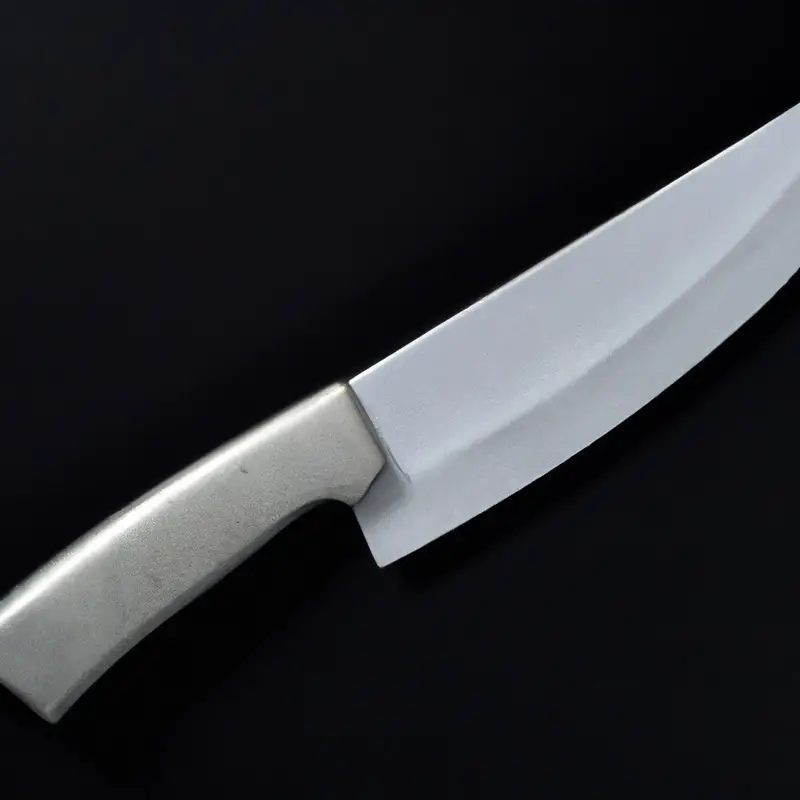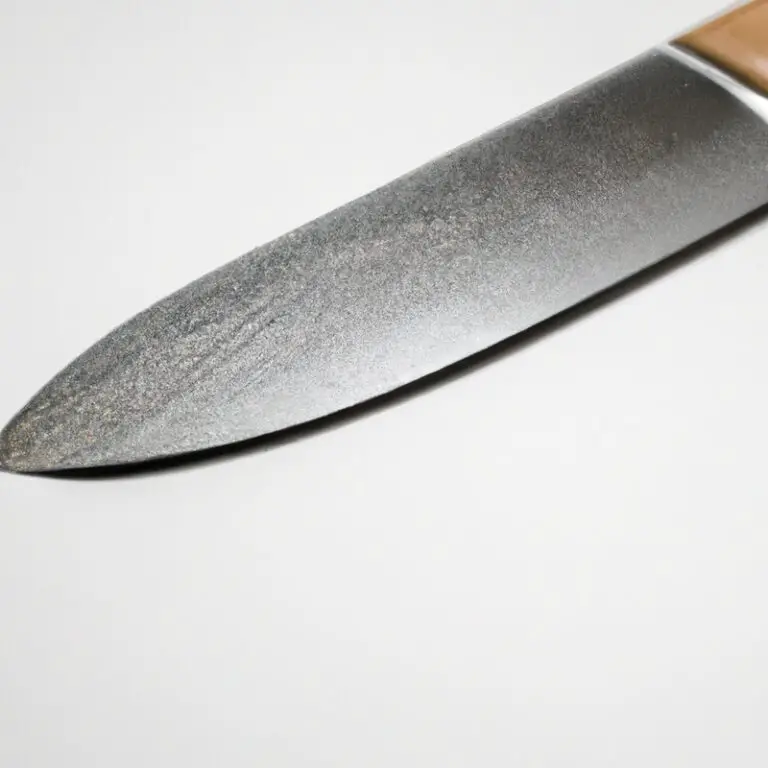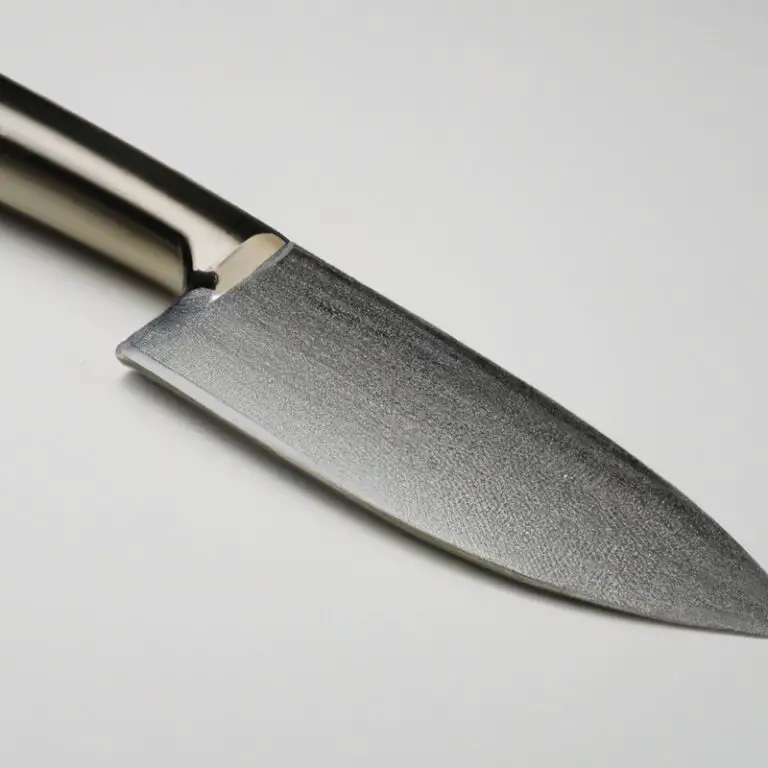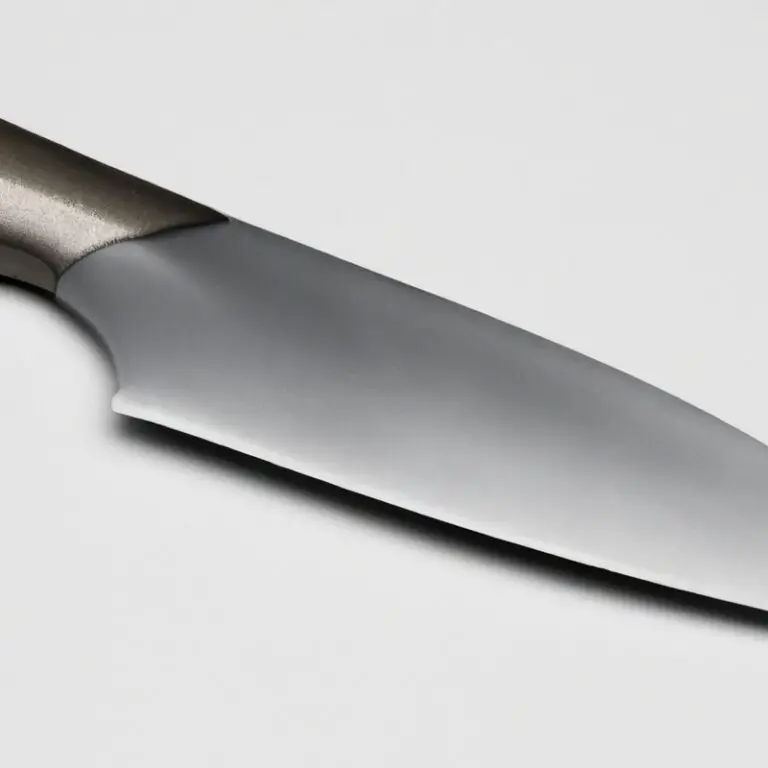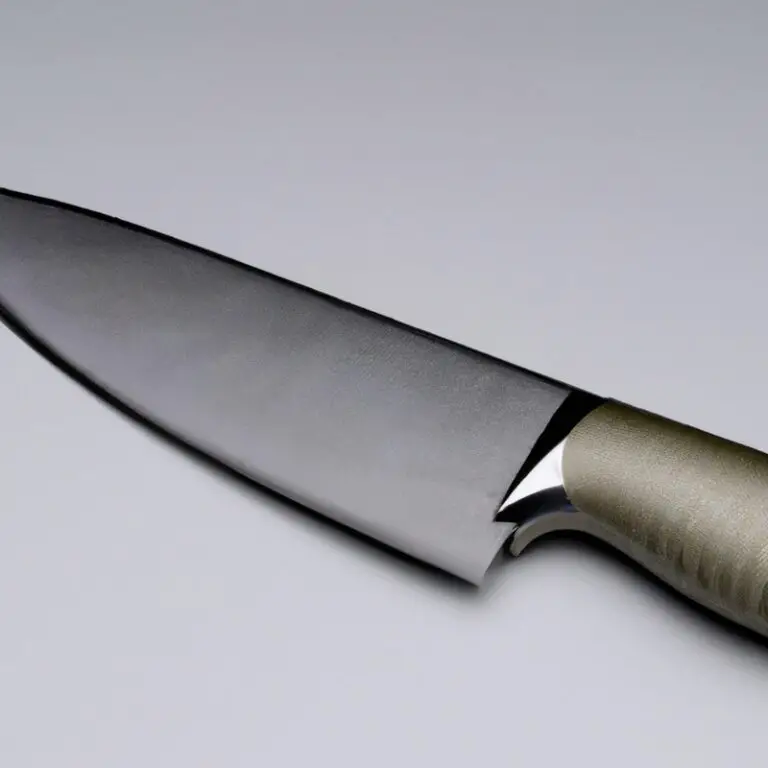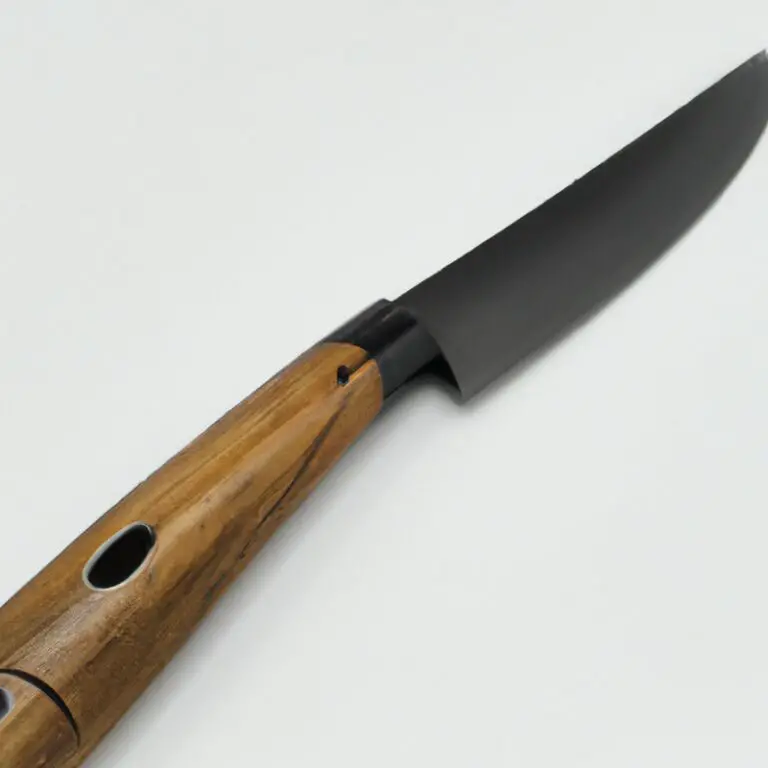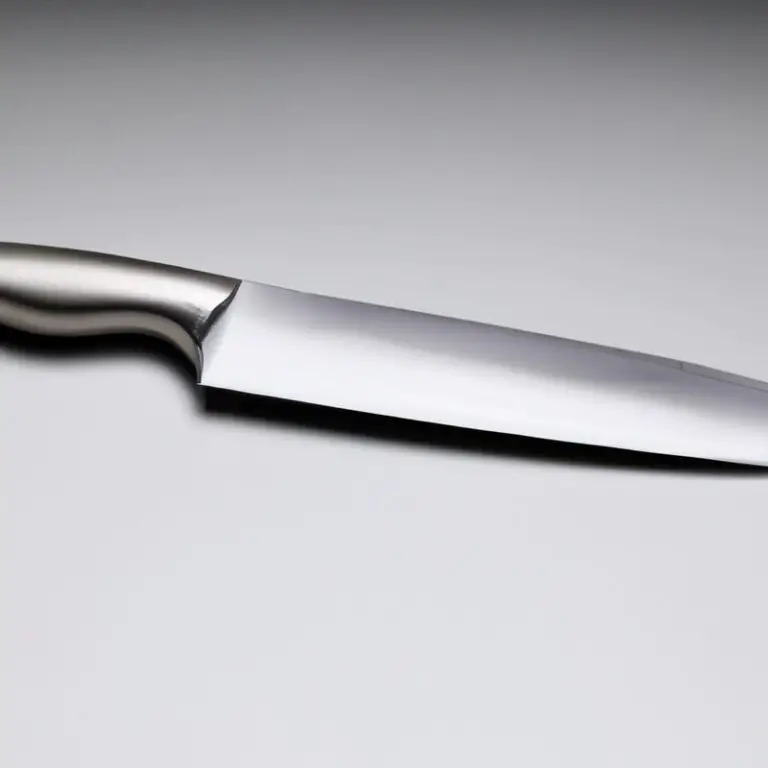How Does The Blade Shape Of a Gyuto Knife Affect Its Performance? – Explained
Key Takeaways:
- The blade shape of a Gyuto knife affects its performance in terms of slicing, chopping, and mincing.
- The Gyuto knife with a curved blade allows for a rocking motion during chopping, while straight blades offer cleaner cuts for slicing.
- The weight and balance of a Gyuto knife also contribute to its overall performance and comfort during use.
- Choosing the right blade shape for your needs and preferences can greatly enhance your cooking experience with a Gyuto knife.
Do you ever wonder why your Gyuto knife doesn’t perform as well as you’d like it to? Did you know that the blade shape plays a significant role in its performance?
As a chef and knife enthusiast, I’ve spent countless hours studying and experimenting with different blade shapes on my Gyuto knives.
In this article, I’ll share my insights on how blade shape affects the knife’s performance, from straight vs. curved blades to the impact of blade thickness and grind.
Join me on this journey of exploring Gyuto knives and discover the perfect blade shape to suit your needs.
| Blade Shape | Performance |
|---|---|
| Straight blade | Great for push-cutting and chopping, but less effective for rock-chopping or slicing through meats. |
| Curved blade | Excellent for rock-chopping and slicing through meats, but may not be as effective for push-cutting or chopping. |
| Clipped point blade | Has a sharp tip that allows for precise cuts and can be great for intricate work, but may be more fragile and less effective at slicing through tougher meats. |
| Sheepsfoot blade | Not ideal for chopping or push-cutting, but great for slicing and precise work, such as trimming fat or filleting fish. |
| Reverse tanto blade | Combines the strength of a traditional tanto blade with a slightly curved edge for more versatile cutting. Can be effective for a variety of tasks, but may not excel in any one area. |
Understanding the Gyuto Knife: A Versatile Blade for Cooks
The Gyuto knife is a versatile blade that originated in Japan and is widely used in professional kitchens worldwide. It has a pointed tip and a long, narrow blade that tapers towards the handle, making it perfect for slicing, dicing, and chopping various ingredients.
The blade shape of a Gyuto knife affects its performance in several ways.
For instance, a straight blade is better for push-cutting, while a curved blade is excellent for rocking and slicing motions. The thickness of the blade impacts the knife’s balance, and a full-tang design provides better control and durability.
Additionally, the blade length and width, grind, and handle material also play a significant role in the knife’s overall performance.
Choosing the right blade shape for your Gyuto knife will depend on your cooking style and the types of ingredients you handle regularly. With proper care and maintenance, a Gyuto knife can last for many years and become an indispensable tool in your kitchen.
Choosing the Right Blade Shape for Your Gyuto Knife
Choosing the right blade shape for your Gyuto knife is essential to ensure optimal performance in the kitchen. Straight blades provide stability and control for precise cuts, while curved blades offer fluidity and versatility for tasks that require rocking motion.
It’s important to consider the type of foods you’ll be preparing regularly and your cutting style to determine the appropriate blade shape.
Additionally, a tapered blade and pointed tip can contribute to efficient slicing and piercing of ingredients. Ultimately, finding a blade that suits your preferences and cooking needs is crucial for a satisfying culinary experience.
Straight Blades vs. Curved Blades: Which is Best for Gyuto Knives?
The blade shape of a Gyuto knife, whether straight or curved, has a significant impact on its performance. Straight blades offer a more efficient and direct cut, making them ideal for precise and delicate tasks.
On the other hand, curved blades provide better control, allowing for smoother and more fluid movements during cutting.
When it comes to selecting the best blade shape for your Gyuto knife, it ultimately depends on personal preference and the specific tasks you will be performing. For instance, those who prioritize precision and accuracy may prefer a straight blade, while those who prioritize control and smoothness may opt for a curved blade.
Overall, both straight and curved blades have their benefits and drawbacks, and the decision ultimately comes down to the user’s individual needs and preferences.
It’s essential to consider the task at hand when selecting the best blade shape for your Gyuto knife.
The Impact of Blade Thickness on Gyuto Knife Performance
The blade thickness of a Gyuto knife has a significant impact on its performance. Thicker blades provide durability, strength, and stability while chopping heavier ingredients like bones.
However, they tend to be less agile and make precision cuts difficult.
On the other hand, thinner blades are perfect for precision cutting due to their flexibility, but they lack the durability and stability of thicker blades. Consider the type of ingredients you typically work with and your preferred cutting style before selecting the thickness of your Gyuto knife’s blade.
The Role of the Tang in Gyuto Knife Quality
The tang is a crucial component of a Gyuto knife’s overall quality. The tang is the part of the blade that extends into the handle.
It ensures that the blade is securely attached to the handle.
A full-tang Gyuto knife has a tang that runs the full length of the handle. A partial tang knife has a tang that extends only partway into the handle.
Full-tang knives are more durable and well-balanced than partial tang knives.
They have a more solid construction and are less likely to break or become loose from the handle. When choosing a Gyuto knife, it is recommended to select a full-tang knife for its durability, strength, and balance.
It will provide optimal performance and a comfortable grip during use.
Handle Materials for Gyuto Knives: Finding the Perfect Fit
The handle of a Gyuto Knife is just as important as the blade itself, and choosing the right handle material is crucial. The handle should provide a comfortable and secure grip while also complementing the knife’s overall design.
Common handle materials for Gyuto knives include wood, synthetic materials, and metal.
Wooden handles, such as rosewood or teak, are popular for their aesthetic appeal and comfortable grip. Synthetic materials, such as G10 or Micarta, are known for their durability and resistance to moisture.
Metal handles, such as stainless steel or titanium, offer a sleek and modern look.
When choosing a handle material, consider your personal preferences and the intended use of the knife. For example, if you frequently work with wet or greasy ingredients, a synthetic or metal handle may be more suitable as they are easier to clean and resistant to slipping.
Ultimately, the perfect handle material for a Gyuto Knife will vary from person to person.
It is recommended to handle and test different knives before making a final decision to ensure the perfect fit for your needs.
Understanding the Benefits of a Full-Tang Gyuto Knife
A full-tang gyuto knife is a chef’s best friend. The full tang refers to the blade’s extension through the handle, providing balance, sturdiness, and control while using it.
This type of knife is made from high-quality steel and is often forged into one piece, making it durable and long-lasting.
The weight distribution of a full-tang gyuto knife is evenly distributed, making it easier to handle, less likely to tire your hand, and, ultimately, safer to use. Moreover, a full-tang knife’s strength helps overcome the resistance of hard vegetables and meat.
It also offers a comfortable grip, reducing the chance of slipping, diminishing the risk of accidents in the kitchen, and providing better control and precision while chopping, dicing, or mincing.
Therefore, Investing in a full-tang gyuto knife is not only a smart choice but also an investment in quality and safety that any kitchen enthusiast or professional chef needs.
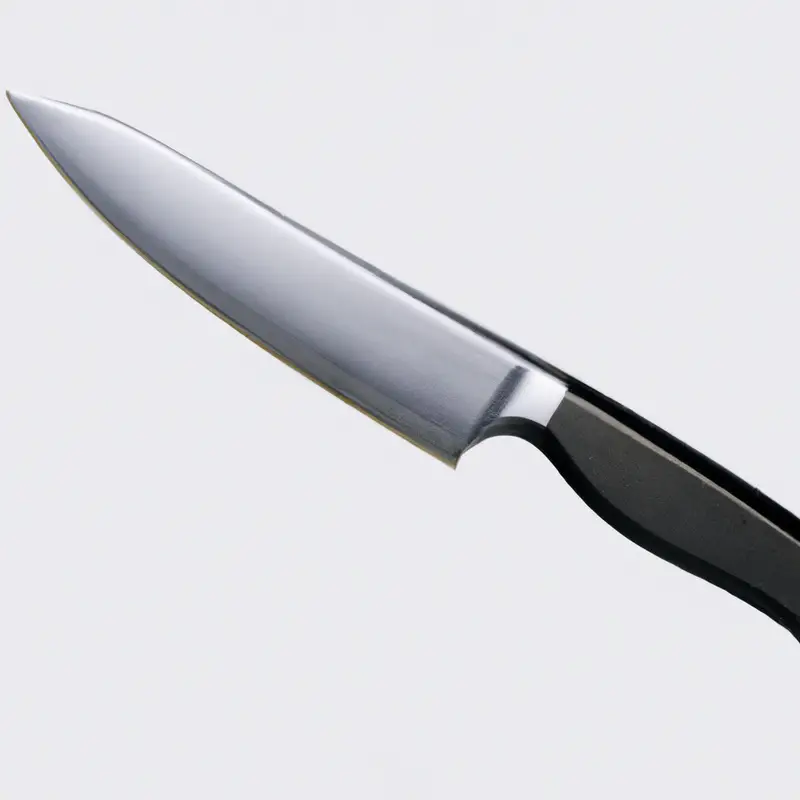
The Impact of Grind on Gyuto Knife Performance
The grind of a Gyuto knife refers to the shape of the blade’s cross-section. The grind affects the knife’s performance by determining its sharpness, durability, and cutting ability.
A thin grind produces a sharper edge but is less durable, while a thicker grind is more durable but less sharp.
A convex grind offers the best of both worlds and is ideal for Gyuto knives. The grind also affects the knife’s cutting ability, as it determines the angle of the blade’s edge.
A lower angle produces a sharper edge but requires more maintenance, while a higher angle is less sharp but requires less maintenance.
Therefore, when choosing a Gyuto knife, consider the grind that will best suit your needs. A thinner grind is great for precision slicing, while a thicker grind is ideal for tougher tasks like chopping bone.
Ultimately, it’s about finding the right balance between sharpness and durability for your specific cooking needs.
The Importance of Blade Length and Width in Gyuto Knives
The blade length and width of a Gyuto knife play a significant role in its performance. A longer blade enables you to make longer strides and cuts through larger items with ease.
A larger blade width offers a wider surface for chopping and creating less resistance while cutting through ingredients, allowing for faster and more precise cuts.
Similarly, shorter blades offer greater control and accuracy over intricate cuts, while narrower blades make it easier to delicately cut ingredients. However, the disadvantage of smaller blades is that they reduce the user’s cutting capacity, and it may slow down the cutting process.
Ultimately, the ideal blade length and width for your Gyuto knife depend on your personal preferences and cooking style.
A larger blade allows for more versatility in the kitchen, but it may not be suitable for those who prefer more precise and detail-oriented cooking techniques. Consider your needs and the tasks your knife will perform before deciding on the optimal blade length and width for your Gyuto knife.
Comparing Single Bevel to Double Bevel Gyuto Knives
Single bevel and double bevel are the two main blade designs for Gyuto Knives. Single-bevel knives are traditional Japanese knives with blades sharpened on only one side, while double-bevel knives have symmetrical blades sharpened on both sides.
Single bevels are known for their sharpness and precision in slicing paper-thin cuts of fish and meat.
However, they require a skilled hand to use effectively. Double bevels, on the other hand, offer more versatility in chopping, slicing, and dicing various ingredients.
Single bevels typically have a steeper cutting angle, making them sharper but also more fragile and difficult to sharpen.
In contrast, double bevels have a wider cutting angle, making them sturdier and easier to sharpen but less sharp than single bevels. Ultimately, the choice between a single bevel and double bevel Gyuto Knife depends on the individual’s preference and intended usage.
Professional chefs may prefer the precision and skill required for a single bevel, while home cooks may prefer the versatility and ease of a double bevel.
It is important to note that single bevel knives are typically more expensive and require more maintenance than double bevel knives. However, they are also prized for their exceptional sharpness and craftsmanship.
How the Blade Shape Affects Gyuto Knife Balance
The blade shape of a Gyuto knife affects its balance, which significantly impacts performance. A blade with a thin, straight profile is ideal for precision tasks, while a curved blade is useful for rocking motions.
The weight distribution between the blade and handle is crucial to balance.
A blade with a short height and a long curve provides a forward balance, while a tall blade and a short curve gives a rearward balance. Overall, the blade shape significantly affects the balance and function of a Gyuto knife.
Caring for Your Gyuto Knife: Maintenance and Sharpening Tips
To prolong the lifespan and maintain the sharpness of your Gyuto knife, regular maintenance and sharpening are crucial. Here are some maintenance and sharpening tips to care for your Gyuto knife:
- Don’t put your Gyuto knife in the dishwasher
- Hand wash and dry your knife properly after use
- Store your knife in a sheath or on a magnetic strip to protect the blade
- Regularly sharpen your Gyuto knife with a honing steel or sharpening stone
- Keep the blade at a 15 to 20-degree angle while sharpening
- Don’t apply too much pressure while sharpening as it may damage the blade
- Use a honing steel before each use to maintain the knife’s sharpness
- Seek professional help for major repairs or sharpening
By following these simple maintenance and sharpening tips, you can keep your Gyuto knife in tip-top condition and ensure optimal performance for years to come.
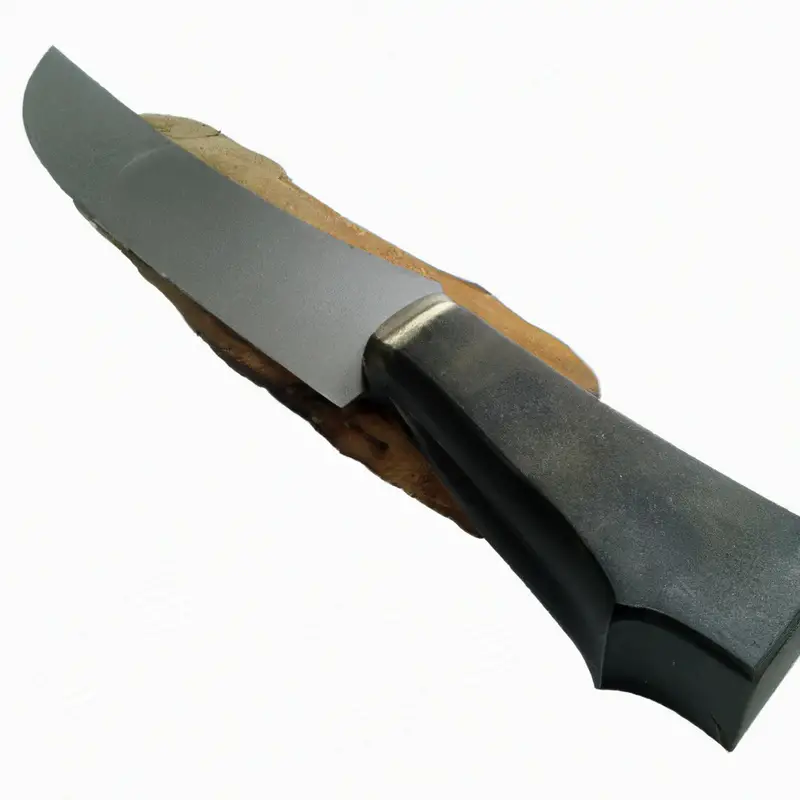
The Impact of Blade Shape on Gyuto Knife Cutting Techniques
The blade shape of a Gyuto knife can greatly impact its cutting techniques. A curved blade allows for a rocking motion while chopping, making it ideal for vegetables, herbs, and meats.
A straight blade, on the other hand, is best for precise slicing and push cuts.
The length of the blade can also affect techniques, as longer blades are better for longer strokes and larger items, while shorter blades are better for small, detailed work. Ultimately, choosing the right blade shape for your Gyuto knife is crucial for achieving optimal performance in the kitchen.
Crafting a Personalized Knife Collection with the Right Gyuto Blade Shapes
Crafting a personalized knife collection with the right Gyuto blade shapes is crucial to achieving optimal performance in the kitchen. It is important to consider the cutting tasks that you commonly perform and select blade shapes that are suited to those tasks.
For example, if you frequently slice through foods with tough outer layers, a knife with a curved blade could be a better choice than one with a straight blade.
Additionally, it is important to consider the length and width of the blade, whether you prefer a double bevel or single bevel, and if you need a full-tang knife for balance and durability. Ultimately, choosing the right Gyuto blade shapes will enable you to work more efficiently and achieve better results in the kitchen.
The Role of Gyuto Knife Blade Shape in Ethnic and Regional Cooking Styles
The blade shape of a Gyuto knife plays a significant role in ethnic and regional cooking styles. For instance, a Japanese Gyuto knife typically has a thinner and sharper blade, which makes it ideal for precision cutting techniques like sashimi and sushi.
On the other hand, a Western-style Gyuto knife may have a thicker blade, which is more suitable for chopping and cutting through dense meat and vegetables.
The shape of the blade also affects the way the knife is used in different regions. In Japan, for instance, the traditional cooking style emphasizes the use of slicing and chopping techniques, which require a thin, sharp blade.
In the West, however, the emphasis is more on rocking and chopping motions, which require a thicker blade with a curved edge.
Furthermore, the blade shape of a Gyuto knife can also be adapted to suit specific ethnic cuisines. For example, a Gyuto knife with a curved blade is preferred in Chinese and Korean cooking because it allows for efficient chopping and slicing of meat and vegetables.
In summary, the blade shape of a Gyuto knife is important in ethnic and regional cooking styles.
It affects the type of cutting techniques used and the kind of food that is prepared. Hence, when choosing a Gyuto knife, it is essential to consider the type of cuisine you will be preparing most often to find the blade shape that suits your needs.
Final Verdict
The blade shape of a Gyuto knife has a direct impact on its performance in the kitchen. Not only does it affect the knife’s balance and maneuverability, but it also determines its suitability for specific tasks.
As a cook, it is essential to understand the different blade shapes available for Gyuto knives and how they can be used to enhance your cutting techniques.
By choosing the right blade shape, you can improve your efficiency and precision in the kitchen, making your cooking experience more enjoyable and rewarding. With this guide, we hope to have provided you with a wealth of knowledge and insights to help you make an informed decision when selecting your next Gyuto knife.
Remember, the right blade shape can make all the difference in your cooking, so choose wisely and embrace the versatility and precision of this fantastic kitchen tool!

